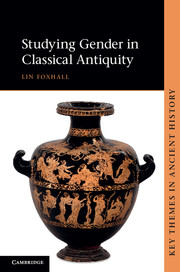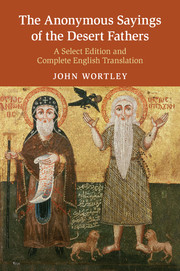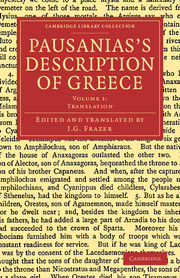Refine search
Actions for selected content:
23990 results in Ancient history
Chapter 10 - Divination, religious change and the future of Rome in Livy
-
- Book:
- Divination, Prediction and the End of the Roman Republic
- Published online:
- 05 May 2013
- Print publication:
- 09 May 2013, pp 192-219
-
- Chapter
- Export citation
Chapter 4 - Theharuspices and the rise of prophecy
-
- Book:
- Divination, Prediction and the End of the Roman Republic
- Published online:
- 05 May 2013
- Print publication:
- 09 May 2013, pp 84-114
-
- Chapter
- Export citation
Chapter 3 - Fringe divination?
-
- Book:
- Divination, Prediction and the End of the Roman Republic
- Published online:
- 05 May 2013
- Print publication:
- 09 May 2013, pp 69-83
-
- Chapter
- Export citation
Chapter 4 - Bodies
-
- Book:
- Studying Gender in Classical Antiquity
- Published online:
- 05 May 2013
- Print publication:
- 09 May 2013, pp 68-89
-
- Chapter
- Export citation
Chapter 8 - Foresight, prediction and decline in Cicero's correspondence
-
- Book:
- Divination, Prediction and the End of the Roman Republic
- Published online:
- 05 May 2013
- Print publication:
- 09 May 2013, pp 174-181
-
- Chapter
- Export citation
Chapter 1 - TheDe diuinationein context
-
- Book:
- Divination, Prediction and the End of the Roman Republic
- Published online:
- 05 May 2013
- Print publication:
- 09 May 2013, pp 10-36
-
- Chapter
- Export citation
Contents
-
- Book:
- Divination, Prediction and the End of the Roman Republic
- Published online:
- 05 May 2013
- Print publication:
- 09 May 2013, pp vii-viii
-
- Chapter
- Export citation
Chapter 3 - Demography
-
- Book:
- Studying Gender in Classical Antiquity
- Published online:
- 05 May 2013
- Print publication:
- 09 May 2013, pp 45-67
-
- Chapter
- Export citation
Chapter 5 - Wealth
-
- Book:
- Studying Gender in Classical Antiquity
- Published online:
- 05 May 2013
- Print publication:
- 09 May 2013, pp 90-113
-
- Chapter
- Export citation
Bibliography
-
- Book:
- Studying Gender in Classical Antiquity
- Published online:
- 05 May 2013
- Print publication:
- 09 May 2013, pp 165-184
-
- Chapter
- Export citation
List of Illustrations
-
- Book:
- Studying Gender in Classical Antiquity
- Published online:
- 05 May 2013
- Print publication:
- 09 May 2013, pp viii-ix
-
- Chapter
- Export citation
List of Tables
-
- Book:
- Studying Gender in Classical Antiquity
- Published online:
- 05 May 2013
- Print publication:
- 09 May 2013, pp x-x
-
- Chapter
- Export citation

Studying Gender in Classical Antiquity
-
- Published online:
- 05 May 2013
- Print publication:
- 09 May 2013

The Anonymous Sayings of the Desert Fathers
- A Select Edition and Complete English Translation
-
- Published online:
- 05 May 2013
- Print publication:
- 02 May 2013

Emperors and Bishops in Late Roman Invective
-
- Published online:
- 05 May 2013
- Print publication:
- 02 May 2013

Divination, Prediction and the End of the Roman Republic
-
- Published online:
- 05 May 2013
- Print publication:
- 09 May 2013

Pausanias's Description of Greece
-
- Published online:
- 05 May 2013
- Print publication:
- 10 May 2012
- First published in:
- 1898

Economy, Family, and Society from Rome to Islam
- A Critical Edition, English Translation, and Study of Bryson's Management of the Estate
-
- Published online:
- 05 May 2013
- Print publication:
- 25 April 2013
The Histories of Polybius
- Translated from the Text of F. Hultsch
-
- Published online:
- 05 May 2013
- Print publication:
- 02 August 2012
- First published in:
- 1889
Itinerary of the Morea
- Being a Description of the Routes of that Peninsula
-
- Published online:
- 05 May 2013
- Print publication:
- 02 August 2012
- First published in:
- 1817
